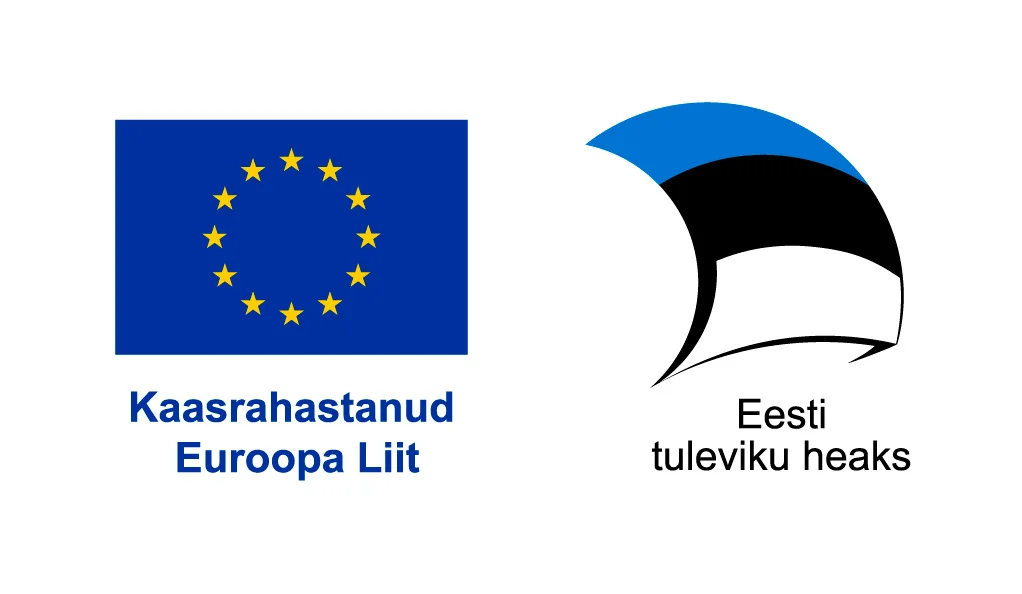I am writing a post glorifying the beauty of Toila Oru Park in its most beautiful place – in the location of the castle that once rose above the Pühajõgi River and above the sea amidst the largest landscape park – feeling the approving look of its last owner Konstantin Päts.
The first president of Estonia Konstantin Päts returned to Oru Park on his birthday, February 23. A serious and thoughtful bronze bronze figure cast at the request of Toila municipality by a sculptor Seaküla Simson. A few years earlier, I was on an evening meeting, where his grandson Matti Päts recalled his childhood summers spent at Oru Castle with his grandfather.
Manifested in dreams
Matti Päts began his walk on the paths of memories with a dream, a meaning of which only became clear many years later. When his parents were imprisoned and Matti lived in an orphanage in Russia, he often dreamed that he was on the green slopes. But there was no indication of where they were located.
When he woke up to the reality of the orphanage, he was always severely disappointed, and a secret was left veiling the place of his dream. Until 1956, when Matti Päts as a student came to visit an acquaintance living here. „We walked together to where Oru Castle once used to be. I realized that these were the hills surrounding the castle that I saw in dreams. I mean, the child was so impressed by the beauty of the castle and its surroundings that it manifested itself in a dream,“ he recalled.
Mother Nature has been very lavish here: the largest landscape park in Estonia was designed on the former lands of Pühajõe manor, where a high klint is cut by a deep ancient valley, at the bottom of which the rapid Pühajõgi River meanders.
Most visitors visit the park during the summer months, but it is worth coming here in all four seasons.
In both spring and onwards, walkers are greeted by blue flowers and giant bluish-purple spots of corydalis in the middle of the lawns; in summer, when irises, roses and linden flowers with a stunningly sweet smell take over the baton; in autumn, when the patterned ash hedges acquire a flaming red color and the linden lanes can be shaken through a thick carpet of leaves; as well as in winter, when snowy slopes attract sledge riders and ragged trees make the park a seemingly transparent land of magic.
Powerful natural background
The park, with its colourful history and varied landscape, offers the same experiences as in its splendid days at the beginning of the 20th century, when Georg Kuphaldt framed Oru Castle, built by the wealthy Russian merchant Grigory Yeliseyev, and in the 1930s when a representation park of the Republic of Estonia was created here. The castle itself was destroyed, but the reason why it was built here has not disappeared.
A historian Ott Sandrak has told cultural listeners in Toila that Grigory Yeliseyev was one of the richest private individuals in the Russian Empire, and when he decided to build a summer cottage for himself, a thorough preliminary investigation was carried out.
As Yeliseyev already had villas on the coast of Nice by the Mediterranean, he could understand the beauty of the place. And, of course, the merchant also consulted the architects. It may be difficult for modest Estonians to believe, but the experts considered the landscape of Toila Oru Valley to be one of the most exceptional places in the vast state.
There is a powerful natural background here, but human care is needed for them to be fully manifested.
In recent years, the current manager, the state forest management center (RMK), has worked hard to make moving in the 74-hectare park more comfortable and more enjoyable: asphalted and paved paths, renovated bridges and stairs, expanded parking lots and illumination, installed information boards and signs. Thanks to this, the more hidden corners of the park can be easily accessed: a species-rich dendropark, a mysterious grotto, a cave of Silver Spring and ponds and the rust springs that feed them.
The restored rose garden delights with hundreds of charming blooms. The choice of varieties has taken into account what was grown here before. Thus, the historical rose variety, which was bred in Germany and named after Konstantin Päts, returned to the castle garden. It shows its cream-yellow blossom next to the sculpture of „Three Graces“.
Next to the castle garden is the other favorite of walkers, the Nõiametsa (Witch Forest) pavilion, which is also called the Swallow’s Nest. While the castle square is a more representative part of the park with its neatly mowed lawns, flower beds and fountains, the witch forest is darker, wilder and more mysterious.
The first Nõiametsa observation pavilion was built according to the design of Roman Koolmar. The book, dedicated to a well-known architect, admits that this pavilion, built almost dangerously on the edge of a klint, referred to Päts’ whims and growing power. In any case, it became the president’s favorite place – he enjoyed admiring the sunrise and the view of the sea while sipping his morning coffee.
The president’s ’coffee house’ was blown up during the war and restored in the 1990s according to the old floor plan, but in a modified form and not as a capital building. It still offers a breathtaking view, and this place is loved by newly-married in addition to walkers.
The organizers of the festive events will probably appreciate the pavilion, which Toila parish plans to restore as a former conservatory. The municipality has already enriched the park culture by building a music lane, thanks to which the music of the 1930s is played to the pedestrians at certain times.
More than a hundred thousand visitors
The development of the park environment did not go unnoticed by visitors and their number is constantly growing. Counters try to determine how many pairs of eyes enjoy the beauty of Oru Park every year. Last year, 140,000 visits were counted electronically, but according to RMK, the actual number could reach two hundred thousand.
Two years ago, Jaroslav Yeliseyev, who lives in the USA, visited the park, approving of what he saw in his grandfather’s former estates.
Those who want more in-depth knowledge of how the Yeliseyevs spent the summer in the Valley and what changes hit the castle and the park when the Russian multimillionaire’s former summer villa became the summer residence of the President of Estonia can book an Oru Park experience tour.
Ida-Virumaa tourism coordinator Kadri Jalonen and the county’s best-known guide Enn Käiss dressed up in the style of the 1930s take tourists for a walk with surprises. Let the latter be mentioned for the sake of appetite. The walk ends in the Nõiametsa pavilion, where a coffee table is exquisitely laid with three types of cookies, the recipes of which date back to Päts’ time. Everything makes you feel as if you have paid a visit to the President.
Of course, you will also feel like a guest of the president if you walk on your own and take some treats with you. The picnic blanket can be spread on the glorious lawns of the park as well as on the rocky beach of Toila, where the comfort of sitting is offered by the woods washed up on the shore. If you don’t bother with your food, „Rannasalong“, „Sadamaresto“ or a picnic basket ordered from the restaurant of Toila Spa Hotel may help you out.
Once a year – on August 20 – you can see walkers in bowler hats in the park. The promenade of Oru Park has hosted a representative event of Toila municipality 23 times and thus it celebrates the day of Estonian re-independence. In the evening, the best Estonian artists perform in the castle garden; during the day suitable activities are offered to the walkers, such as painting and photography master class, poetry minutes or mastering a bow tie. On a dark August evening, burning candles lead the way home.
SIRLE SOMMER-KALDA








